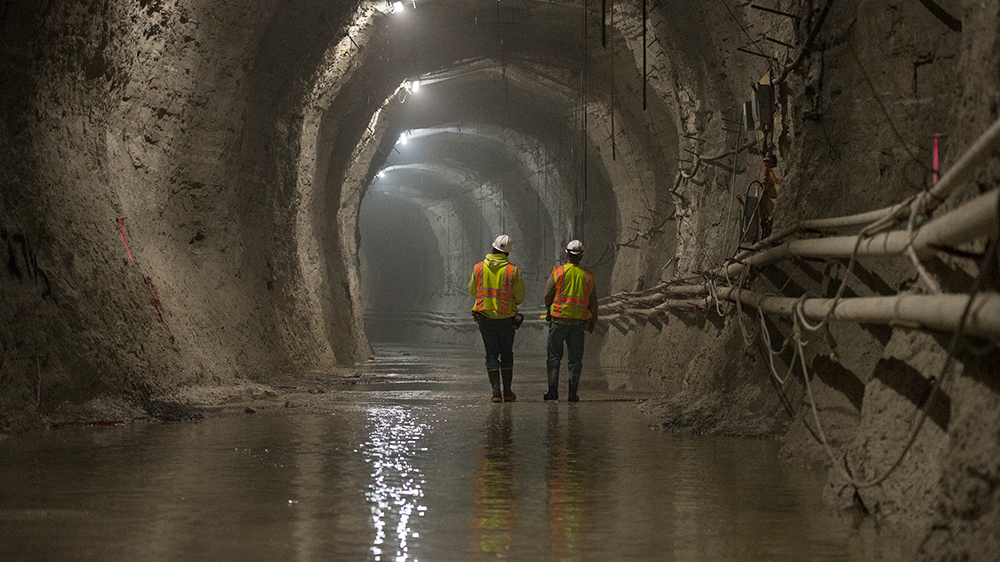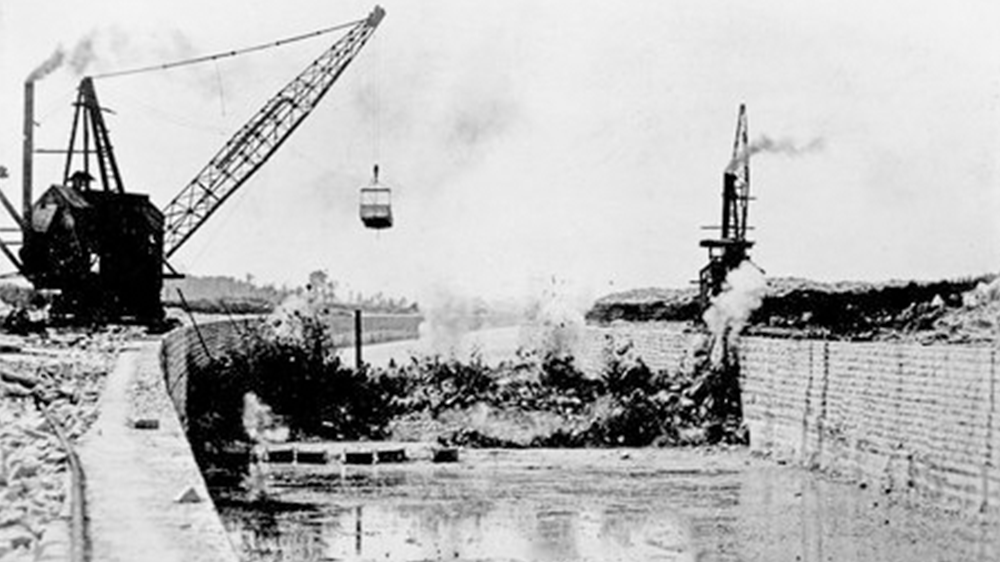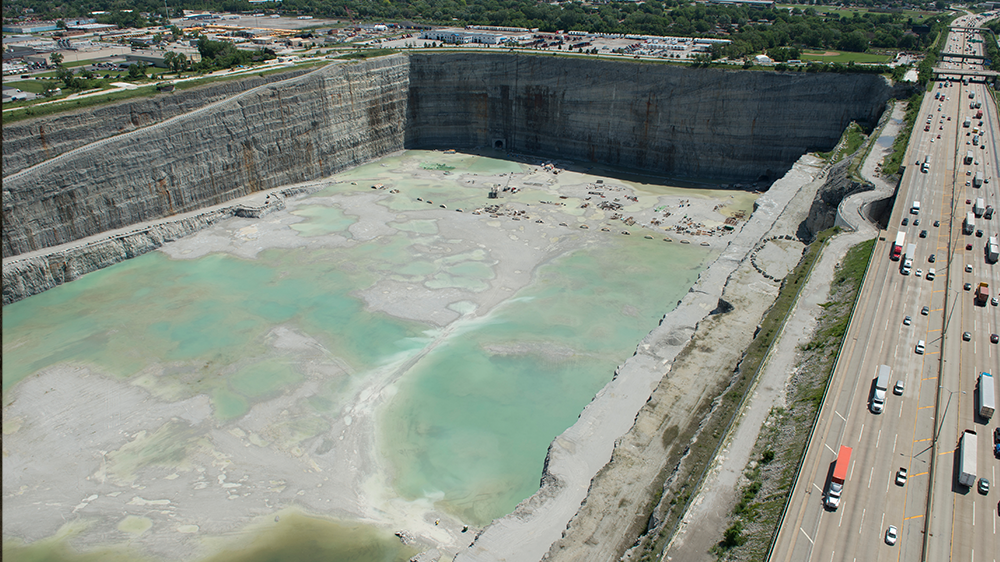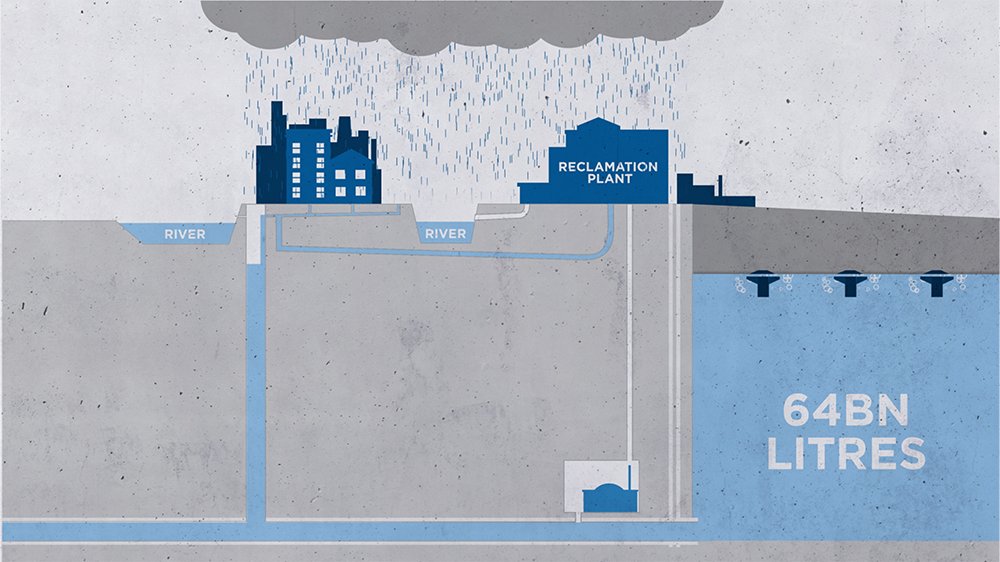The Secret $4BN Tunnel Network Under Chicago
- Youtube Views 1,672,863 VIDEO VIEWS
Video hosted by Fred Mills.
WALK around the streets of Chicago and you’ll see giant skyscrapers, Wrigley field and lots of deep dish pizza restaurants.
But deep beneath all this the city is hiding something more.
90 metres below your feet you’ll find a secret underground tunnel network that sprawls 175 kilometres beneath the metropolis and surrounding area that’s part of one of the largest civil engineering projects in the world.
Construction has been underway since the 1970s and in the future it could be a key tool in the fight against climate change. So what is this secret labyrinth concealed below one of America’s largest cities? Why does it exist? And how exactly was it built without anyone noticing?
We’re heading underground to find out.

Above: Workers walk through the tunnel network beneath Chicago. Courtesy MWRD.
Now, our built environment and the process of constructing it accounts for around 40% of all global greenhouse gas emissions. So, while many of us might not realise it, if we really want to tackle climate change it’s kind of essential that we build and use our buildings, cities and transport systems in a much more sustainable way.
Our built world is critical in combating the effects of climate change too. Some of those effects are now inevitable as global temperatures are predicted to rise by 1.5 Celsius, regardless of the many actions being taken.
Construction can help build a more sustainable world and protect us from the impacts of our changing climate – and America’s Windy City is just one place deploying defences.
Let’s rewind a bit. Throughout the late 19th and 20th century, Chicago was rapidly expanding – but as its population swelled, infrastructure began having a hard time catching up.
Chicago was built on top of a literal swamp. As such its geography was very flat and low lying, and that created severe drainage problems. Following storms, mud-filled streets and pools of standing water would form all over the city. Eventually authorities decided to construct a comprehensive sewer system.
But digging an underground system would have been too expensive, so Chicago just raised the whole city out of the mud by a couple of metres, added above-ground sewer pipes and filled the gaps in with dirt. But as one problem was being solved, another was being created. All the newly laid sewers flowed directly into the waterways, waterways that eventually flowed into Lake Michigan, the source of the city’s drinking water.
That caused a lot of disease among residents, so officials began looking for yet another fix – and if you thought raising the city off the ground wasn’t ambitious enough already … wait until you hear this plan.
The Chicago River was reverse engineered. Instead of flowing into the lake, it was redirected into the Mississippi River.
Now, changing the direction of a river works like this. First a series of locks were constructed along with a brand new 45-kilometre canal that sloped downhill. Pumping stations then directed water through the canal as it deepened towards the Des Plaines and Mississippi Rivers, thus creating a reversal effect.
To this day, the river still runs backwards.

Above: Construction of the canal to reverse the Chicago River. Image Courtesy of Chicago History Museum.
But as the population continued to swell, the sewer system that had once saved the city began getting overwhelmed.
By the 1960s, sewers were overflowing more than 100 days each year. Flooding became more common, and Chicago once again found itself trying to solve a giant problem. So the Water Reclamation District teamed-up with some other local entities, and put a bold new plan into action.
Enter the cleverly-named Tunnel and Reservoir Plan – also known as the Deep Tunnel system. It’s that 175-kilometre underground tunnel network set to feature no fewer than three reservoirs that goes right through the heart of downtown Chicago. It’s meant to help manage the overflow and pollution issue. Any extra runoff water from storms could now be redirected through the new tunnels and stored in the reservoirs before being treated and eventually released.
Construction began way back in 1975 with Phase 1 – the tunnels themselves.
Now, these weren’t your average sized tunnels back then. Four distinct systems stretched up to 10 metres in diameter and under 100 metres of solid bedrock.
"It was decided we're going to make the contractor use tunnel boring machine to create these tunnels in rock, even though at the time more traditional drilling and blasting techniques may have been a little bit cheaper and more reliable," Kevin Fitzpatrick, assistant director of engineering at the Metropolitan Water Reclamation District of Greater Chicago said.
"They thought, well, the machine is probably not going to cause as much damage to the rock as blasting would. So they were getting maybe 50 feet of a tunnel constructed in a day back when they started. And then within ten, 15 years, they're up to 150 feet, 200 feet per day."
By the time the tunnel network was finally finished in 2006, they could manage nearly 9BN litres of water (that’s around 2.3BN gallons). It also helped reduce pollution by nearly 85%.
And while the Deep Tunnel’s construction wasn’t originally built in response to climate change – it now finds itself as a critical tool in combating the effects of it. According to the latest National Climate Assessment, an increase in heavy rain and storms in the Midwest could lead to flooding, which may destroy property and contaminate drinking water.
That’s why Phase 2 of the project is becoming increasingly urgent. It consists of three massive reservoirs that allow the system to handle even more water. Two of them are already complete.

Above: An aerial view of the Thornton Reservoir. Image courtesy of MWRD.
"We have these wheeled gates that isolate the tunnels from the reservoirs, they operate only when the reservoir needs to be when it goes to completion or if somebody is working there, we'll have to close it and isolate it," Fitzpatrick said.
"In addition there's a grout curtain that surrounds the reservoir. And this is really to kind of seal the reservoir almost like a bathtub. It's almost like caulking all the holes in the rock. So what we're doing is we're drilling down a hole almost 500 feet all the way around it. It's about a three inch diameter hole. And we're pumping it with this grout material under pressure. And that seeps through cracks, sealing it. And they put these holes every five feet around the three mile perimeter of the reservoir."
So now when it rains in Chicago – water first flows into the local combined sewers. These were originally directed into rivers but now that water is intercepted by the newer sewers. Then, overflow shoots 70 to 90 metres down a drop shaft into tunnels deep underground. Here, water is pushed into the reservoirs where it’s stored until reclamation plants have enough capacity to clean it. That process normally occurs during dry weather or during moderate rainfall.
Once the water is cleaned at the plants, it’s steadily released into the river.

Above: The journey of water through the Tunnel and Reservoir system.
When all three reservoirs complete in 2029 the entire system will be able to hold over 64BN litres of water – that’ll continue to ease flooding and pollution after big storms.
And even though construction works still have a few more years to go, Chicago is already seeing the benefits of its secret tunnel network. Less contamination has enabled more species to return to the waterways. Since the 1970s, the number has skyrocketed from 10 to nearly 80 different kinds of fish.
Waterfront property construction is also booming, something that’s been good for Chicago’s economy. The city even built a brand new riverwalk with restaurants and bars that’s become a popular walking spot.
Now 64BN litres of water may sound like a lot of water. And it certainly is! But during big storms the system can and will hit capacity.
When that happens it will revert to the original process of directing the combined overflow into the waterways. That can cause polluted water to flood streets and basements. And further effects of climate change could, of course, make that a much more regular occurrence.
"We have a very good model of our entire sewer network and tunnel system that we use to sort of simulate what if scenarios, and we look at potential expansion of the tunnel and reservoir plan, but really, right now we're looking at using a lot of green infrastructure, " Fitzpatrick said.
"It's trying to simulate nature by having water kind of stay where it lands, by infiltrating it into the ground - sending it through bio swales or rain gardens or things like that. And really that the idea is to keep it out of the sewer itself. If it doesn't make it to the sewer, then it's not going to make it to the waterway or is not going to back up into somebody's basement."
Throughout the centuries, Chicago has continued to build its way out of problem after problem with some of the biggest engineering projects in the world. But unlike before, preparing for the impacts of climate change is a moving target. It’s an event we can see happening across the world with a future we have no precedent for – and we’ll need to prepare our cities for it in a variety of ways.
The Tunnel and Reservoir Plan is just one of them and it’s a project that many other urban areas could learn from as we fight the impacts of a changing climate together. Construction is central in ensuring a sustainable future for us all.
While we may all see and feel increasingly common storms like these, Chicago’s way of dealing with them is much more tucked away. It shows once again the remarkable power that construction has to help shape, change and save our world – even if you can’t see it happening.
Video presented and narrated by Fred Mills. Additional footage and images courtesy MWRD and Chicago History Museum.
We welcome you sharing our content to inspire others, but please be nice and play by our rules.








